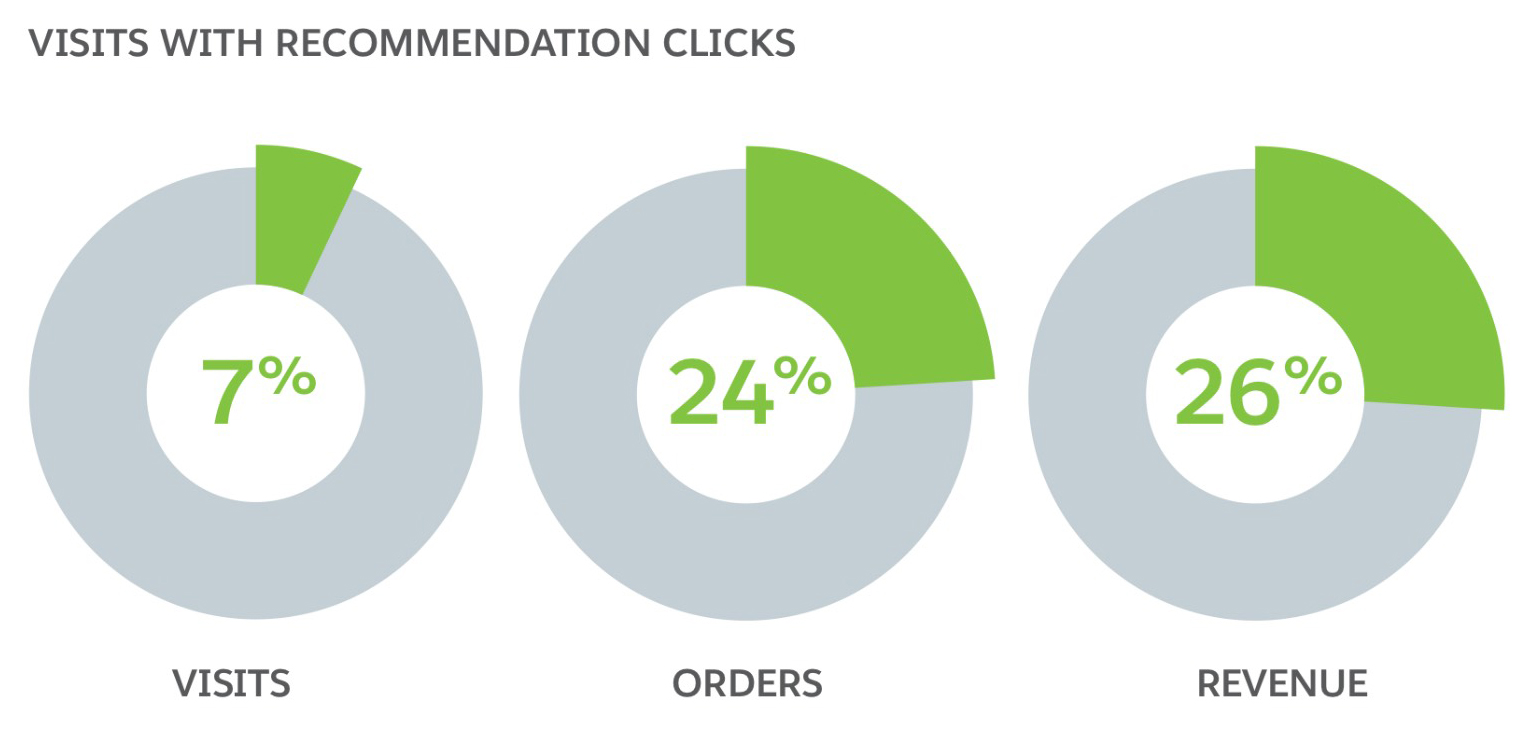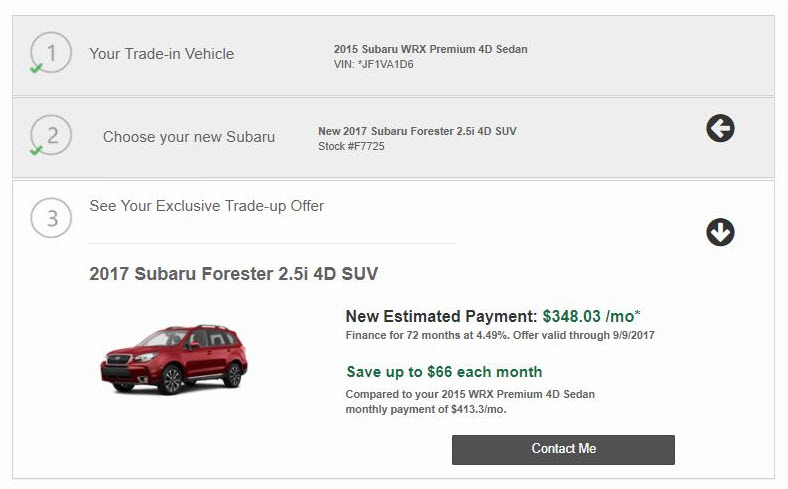Personalization is the key to selling online. Without personalization, you’re relying on consumers to figure out what they want. By presenting relevant products, you eliminate all of that hard work, which most shoppers aren’t going to do anyway.
A study conducted by Salesforce in March to June 2017 revealed that shoppers prompted with relevant product recommendations accounted for 26 percent of revenue on ecommerce sites. This, despite results that show only 7 percent of visitors click such links.

A 2017 study from Salesforce examined data from 150 million shopping sessions. It showed that logical product recommendations accounted for 26 percent of stores’ revenue.
—
The breakdown of the Salesforce study shows impressive details of the conversion rate, add-to-cart rate, revenue share, and average order value overall. Each device type saw an increase in conversions and revenue.
| Conversion Rate | Add-to-cart Rate | Revenue Share | Average Order Value | |
|---|---|---|---|---|
| All Devices | 4.6 times higher | 24% higher | 26% | 10.3% higher |
| Desktop Computers | 4.3 times higher | 22% higher | 25% | 10.2% higher |
| Smartphones | 4.3 times higher | 26% higher | 26% | 7.9% higher |
| Tablets | 4.1 times higher | 31% higher | 33% | 15.2% higher |
—
Relevant recommendations can help with big-ticket sales, too. Last year, AutoLoop, which provides marketing services to auto sales dealerships, rolled out a tool that recommends the best trade-up vehicle based on someone’s purchase history, current monthly payments, and other data. Consumers can narrow options by providing additional information.

AutoLoop’s tool for car dealerships allows consumers to see personal recommendations for trade-ups.
Studies consistently show that product recommendations based on a shoppers’ interests or actions boost sales. While most store owners and managers are aware of the importance of presenting this ideal content, most do nothing to use shoppers’ data to their advantage.
Getting Started
Getting started with product recommendations requires an action plan. It should look something like this:
1. Collect and compile data. If you don’t have a big budget, start with Google Analytics and your shopping cart. Work toward implementing third-party tools that collect additional types of data, like how far down the page people are scrolling and content they engage with on social media, including pages they like on Facebook.
2. Decipher the data and deliver the content. For returning visitors, relying on order and action history is a good way to drive recommendations. For first-time visitors, use the most popular products and categories. Working with real-time data is also key. This can be as simple as inserting conditionals that display varying content, depending on where the shopper comes from — another website or social channel, for example. Or, it can be as complex as, for example, displaying new ski jackets because it just snowed Plattsburgh, N.Y. and the shopper — a longtime customer — lives 10 miles from there and, according to your records, hasn’t bought new ski gear in two years.
3. Study the results. By tagging page elements and campaigns, you can track what’s working and what isn’t. This will help increase conversions and order values for all types of shoppers and product lines. Don’t just look at overall numbers. Studying segments and individual campaigns helps find weak links that drive down averages.
4. Take appropriate action. You may be tempted to ditch every campaign that doesn’t provide good results. Many times, though, similar sites have the same problem. Focus on improving even the little things because they could ultimately make a huge impact.
Chances are, you won’t be able to do all this yourself. Even if you’re armed with the knowledge, maintaining custom-built scripts is time-consuming. Consider a third-party provider. Conduct research before signing any long-term contracts. Make sure that the tools you use are secure, frequently maintained, and accurate.
